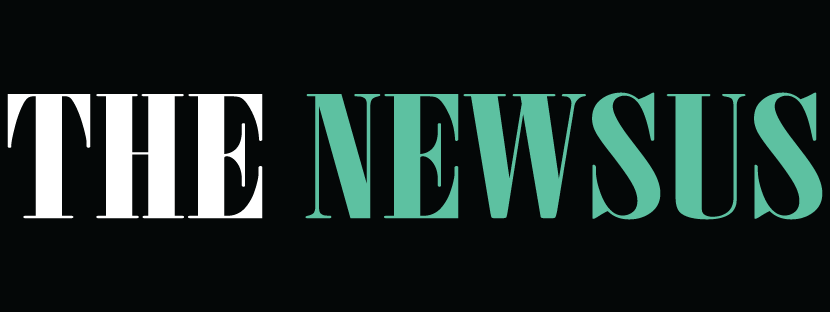Steps to Integrate a Custom Office Desk into Open Office Plans
Open office layouts have become a popular choice for companies that want to encourage collaboration, flexibility, and creativity in the...
Open office layouts have become a popular choice for companies that want to encourage collaboration, flexibility, and creativity in the workplace. These spaces provide openness and visibility, but they also require careful planning to ensure that both comfort and efficiency are maintained. One of the most critical pieces of furniture in such spaces is the office desk.
A Custom Office Desk can be the perfect solution for businesses looking to balance functionality with brand identity in an open office environment. By tailoring a desk to match both the design and the operational needs of the workplace, companies can create a workspace that feels inviting and purposeful.
Understanding the Purpose of Open Office Plans
Before integrating new furniture, it is important to understand why businesses adopt open layouts. The goal is not just to save space but to enhance interaction and productivity.
- Collaboration: Open offices remove physical barriers, making it easier for teams to share ideas quickly.
- Flexibility: Modular furniture arrangements allow businesses to adapt spaces for meetings, teamwork, or individual work.
- Transparency: The absence of walls fosters a sense of accountability and openness among employees.
- Efficient use of space: With fewer partitions, offices can accommodate more people in the same area without feeling overcrowded.
Aligning Desk Design with the Office Environment
A custom desk is not just a piece of furniture—it is part of the workplace design language. To make it fit seamlessly into an open office, businesses must consider the relationship between aesthetics and function.
- Proportional sizing: Desks must suit the space available. Oversized desks disrupt the flow, while undersized ones limit functionality.
- Design coherence: The desk should complement the flooring, lighting, and surrounding furniture to create a cohesive look.
- Neutral or brand-focused styling: Some companies choose neutral tones for flexibility, while others use brand colors to make the workspace more distinctive.
Ergonomics as a Priority
Open office spaces can sometimes feel overwhelming. To make employees comfortable, ergonomics should always be a priority in desk design.
- Proper height and spacing: The desk must allow employees to maintain correct posture and reduce strain on their neck, back, and wrists.
- Legroom and accessibility: Adequate clearance under the desk ensures employees can move comfortably.
- Compatibility with ergonomic chairs: Since the desk and chair work together, their dimensions must align to support good posture.
Materials That Support Longevity and Style
The material of the desk has both functional and aesthetic implications. Selecting the right material is critical to durability, maintenance, and brand alignment.
- Wood finishes: Solid wood or high-quality veneer offers a classic, warm appearance that suggests reliability.
- Metal frames: Sleek steel or aluminum adds strength and a modern edge, suitable for tech-driven environments.
- Glass elements: A glass surface communicates openness and transparency but requires regular cleaning to maintain its appeal.
- Eco-friendly materials: Sustainable choices like bamboo or recycled composites demonstrate a company’s commitment to environmental responsibility.
Configurations That Work in Open Offices
One advantage of custom desks is that they can be designed in specific configurations to suit the office layout.
- Benching systems: Long, shared desks allow multiple employees to sit side by side. These encourage collaboration but must be balanced with noise control.
- Cluster pods: Grouped desks arranged in clusters provide teamwork opportunities while still allowing personal space.
- L-shaped desks: These maximize workspace for individuals who handle multiple tasks at once while keeping them engaged in the open environment.
- Standing desks: Adjustable desks give employees the choice to work seated or standing, supporting health and flexibility.
Integrating Technology Into Desk Design
Modern offices rely heavily on technology, and desks must adapt to accommodate these needs.
- Cable management systems: Hidden channels and ports prevent clutter from wires, keeping the office neat.
- Built-in charging stations: USB ports and wireless charging pads make it easy for employees to stay powered throughout the day.
- Monitor stands and mounts: Adjustable features help employees position screens at eye level for ergonomic comfort.
- Smart desk features: Some businesses invest in desks with programmable height settings or connectivity for enhanced convenience.
Balancing Privacy and Openness
One of the biggest challenges in open office design is maintaining privacy without defeating the purpose of the layout. Desk design plays a crucial role here.
- Desk dividers: Low panels or glass partitions provide personal space while keeping visibility intact.
- Sound-absorbing features: Upholstered screens or acoustic panels attached to desks reduce noise distractions.
- Personal storage: Integrated drawers or side units allow employees to keep personal items nearby without cluttering the workspace.
Lighting Considerations
The placement of desks within an open office must account for lighting conditions. Poor lighting can cause fatigue and reduce productivity.
- Natural light optimization: Positioning desks near windows ensures employees benefit from natural daylight, which boosts focus and mood.
- Task lighting: Desks should have provisions for lamps or built-in lighting for precision work.
- Even distribution: Desks must be arranged so that no one area is too bright or too dim compared to others.
Employee-Centered Design
Open office furniture should support the people who use it. Businesses that ignore employee needs risk reducing productivity and morale.
- Surveys and feedback: Before finalizing desk designs, employees can provide input on what features they value most.
- Test installations: Introducing prototypes allows staff to experience the desks firsthand and suggest improvements.
- Adaptability: Providing a variety of desk styles within the office caters to different working preferences.
Budgeting for Custom Desks
Designing custom desks can appear expensive, but smart planning helps businesses stay within budget while achieving their goals.
- Prioritize high-impact features: Focus on elements that influence brand image and productivity, such as materials and ergonomics.
- Work with manufacturers directly: Eliminating intermediaries can reduce costs without compromising quality.
- Plan for scalability: Choosing modular designs ensures that additional desks can be added later without disrupting the office aesthetic.
Steps for a Smooth Integration Process
Bringing a new custom desk into an open office plan involves multiple steps. Following a structured process reduces the risk of errors and ensures satisfaction.
- Analyze office needs: Evaluate how many desks are required, where they will be placed, and what functions they must serve.
- Develop design concepts: Collaborate with designers to create sketches or digital renderings that align with office style.
- Review employee feedback: Gather opinions on design proposals to ensure usability.
- Test samples: Introduce a small number of desks first to assess comfort and practicality.
- Finalize and implement: Once testing is complete, move forward with the full installation.
Long-Term Value of Custom Desks in Open Offices
Beyond aesthetics and function, custom desks can significantly improve workplace culture and brand identity. They communicate professionalism to visitors while providing employees with an environment that supports productivity. By planning for long-term use, businesses can reduce replacement costs and maintain consistency as they grow.
Conclusion
Integrating a desk into an open office requires thoughtful planning, from ergonomics and materials to layout and employee feedback. A well-designed setup not only enhances collaboration but also reinforces brand values through functional and aesthetic consistency. By focusing on comfort, adaptability, and modern features, businesses create offices where people feel engaged and productive.
A carefully chosen custom office furniture piece, when placed strategically, ensures the open office delivers both style and practicality, leaving a lasting impression on employees and clients alike.




